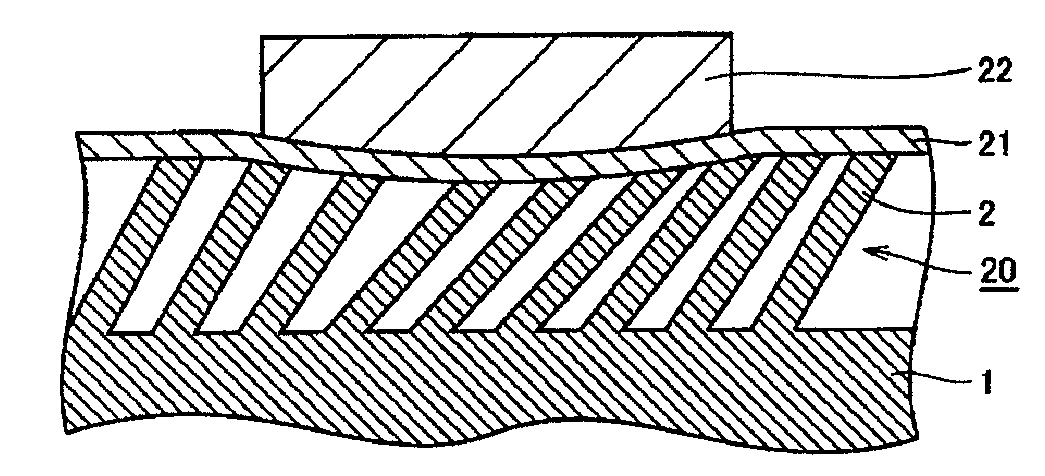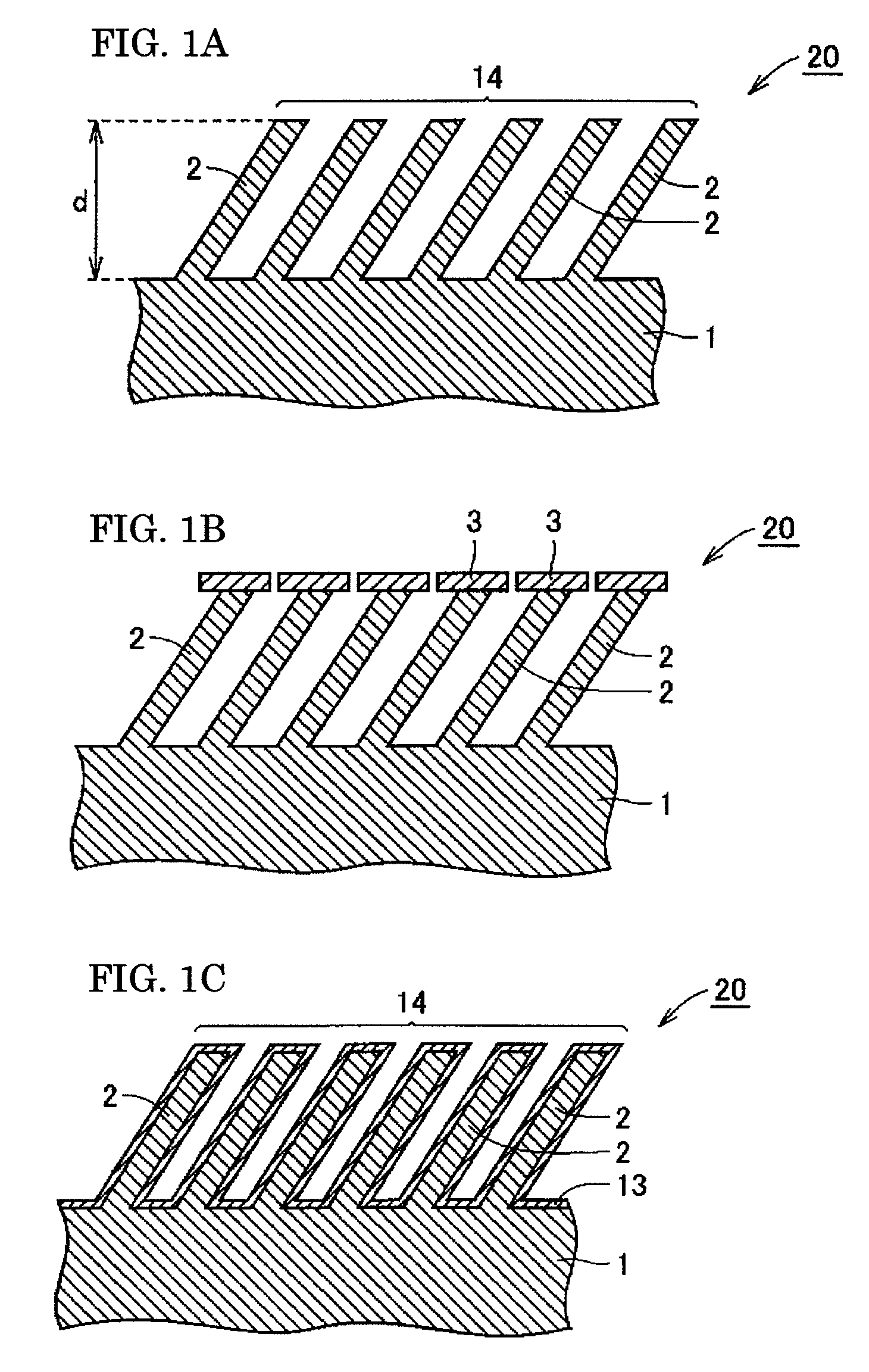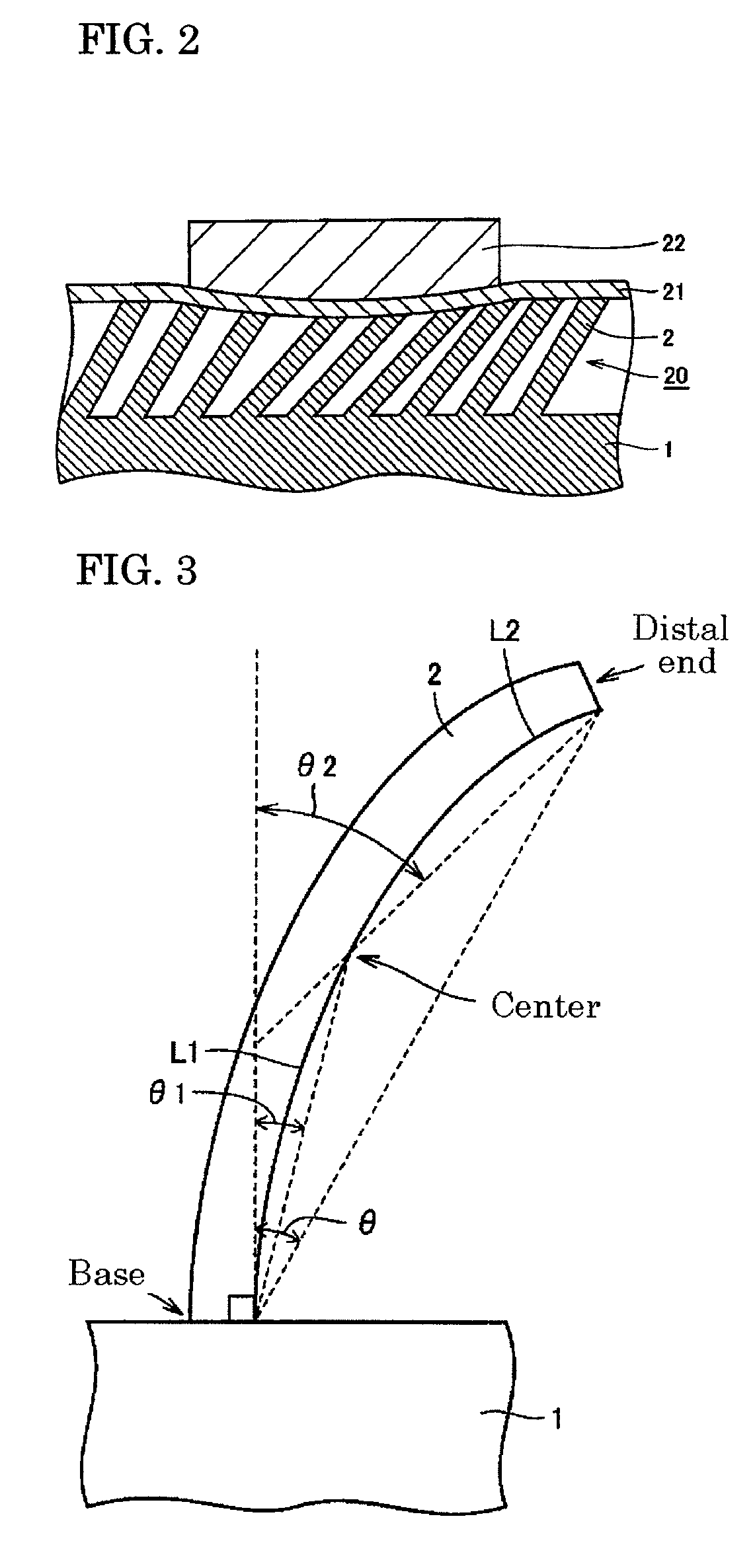Heat transfer member, convex structural member, electronic apparatus, and electric product
a technology of convex structure and heat transfer member, which is applied in the direction of lighting and heating apparatus, laminated elements, and semiconductor/solid-state device details. it can solve the problems of large angle to the external periphery, limited size, and considerable thickness increase of cathode-ray tube televisions. achieve rapid heating, increase heat output, and increase efficiency
- Summary
- Abstract
- Description
- Claims
- Application Information
AI Technical Summary
Benefits of technology
Problems solved by technology
Method used
Image
Examples
embodiment 1
[0057]Warping, waviness, surface roughness, and other shapes that cannot be perfectly suppressed are commonly present in a cooled body, gaps are therefore generated in the surface of contact with the heat sink, and the gaps have substantially no thermal conductivity, resulting in a considerable hindrance to heat transfer. When highly rigid components are placed in contact with each other, for example, a perfectly flat surface cannot be formed when viewed microscopically, no matter how much the planarity is increased and the surface roughness is reduced. As a result, the three most projecting points make contact, and the other parts remain suspended. Therefore, gaps produced between components do not contribute to heat transfer, and cooling capacity is unavoidably reduced.
[0058]In view of this situation, it has conventionally been necessary to use grease, an organic sheet, or a highly effective space-filling polymer to fill in gaps between components. However, the thermal conductivit...
embodiment 2
[0102]The convex structural member of the present invention is a member having a plurality of convex structures supported on a support, wherein all or some of the convex structures are in contact with a contacted body and undergo elastic and / or plastic deformation along the shape of a contact surface of the contacted body. Heat is therefore moved via the convex structural unit because the convex structure can be in direct contact along the wavy and rough irregularities of the cooled body and is in direct contact with the contacted body. In other words, direct gapless contact can be made with a contacted body, and the heat of the contacted body can be taken away or be supplied to the contacted body. A contacted body can be rapidly brought to a prescribed temperature because heat is rapidly transferred from a higher-temperature region to a lower-temperature region via a convex structural unit that is in contact with the contacted body.
[0103]In one mode of the convex structural member ...
example 1
[0125]An AlN heater 4 having longitudinal, horizontal, and thickness dimensions of 20×20×1 mm was used in place of a semiconductor element, as shown in FIG. 11, and the AlN heater 4 was bonded to an Al2O3 substrate 5 having a purity of 92% and longitudinal, horizontal, and thickness dimensions of 40×40×2.5 mm, respectively, by using Ag grease (thermal conductivity: 9 W / m·K). The contact area in the center of the reverse side of the Al2O3 substrate 5, which was a contacted body, had a length of 20 mm and a width of 20 mm and was concavely warped by 0.05 mm.
[0126]A columnar body assembly 7 composed of an assembly of numerous Cu columnar bodies on one side of a Cu base 6, which was a support, were also formed by electrical discharge machining to serve as the heat transfer member 20. A Cu plate-like body 8 for radiating heat was disposed on the other surface of the Cu base 6, and fins 9 were formed by integral machining on the rear surface of the Cu plate-like body 8. The columnar bodie...
PUM
| Property | Measurement | Unit |
|---|---|---|
| inclined angle | aaaaa | aaaaa |
| thickness | aaaaa | aaaaa |
| thermal conductivity | aaaaa | aaaaa |
Abstract
Description
Claims
Application Information
 Login to View More
Login to View More - R&D
- Intellectual Property
- Life Sciences
- Materials
- Tech Scout
- Unparalleled Data Quality
- Higher Quality Content
- 60% Fewer Hallucinations
Browse by: Latest US Patents, China's latest patents, Technical Efficacy Thesaurus, Application Domain, Technology Topic, Popular Technical Reports.
© 2025 PatSnap. All rights reserved.Legal|Privacy policy|Modern Slavery Act Transparency Statement|Sitemap|About US| Contact US: help@patsnap.com



